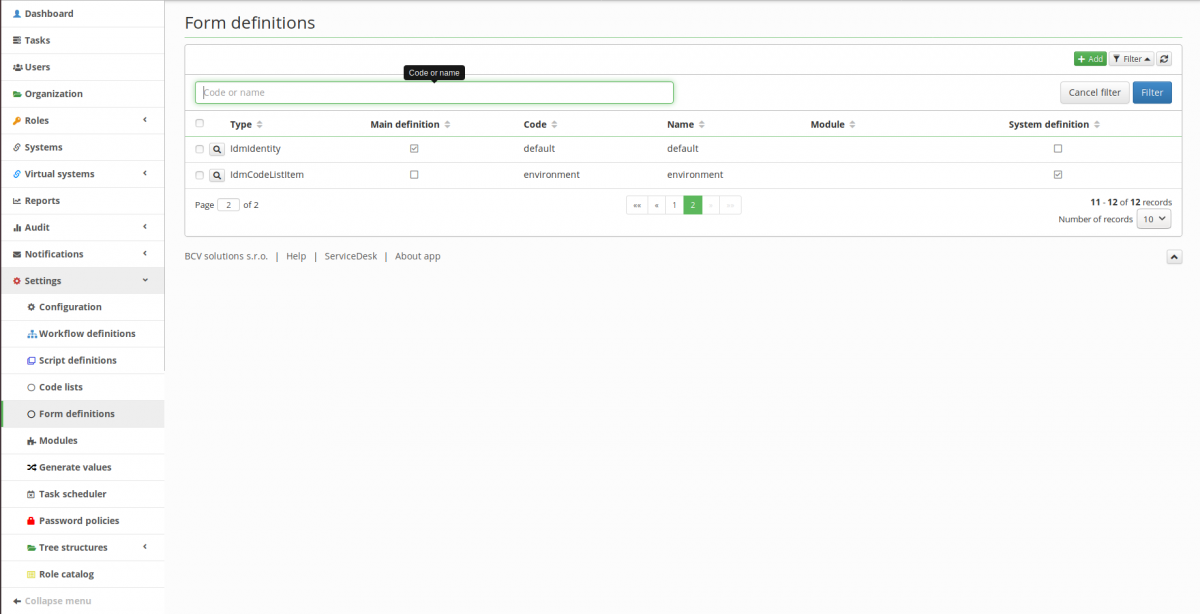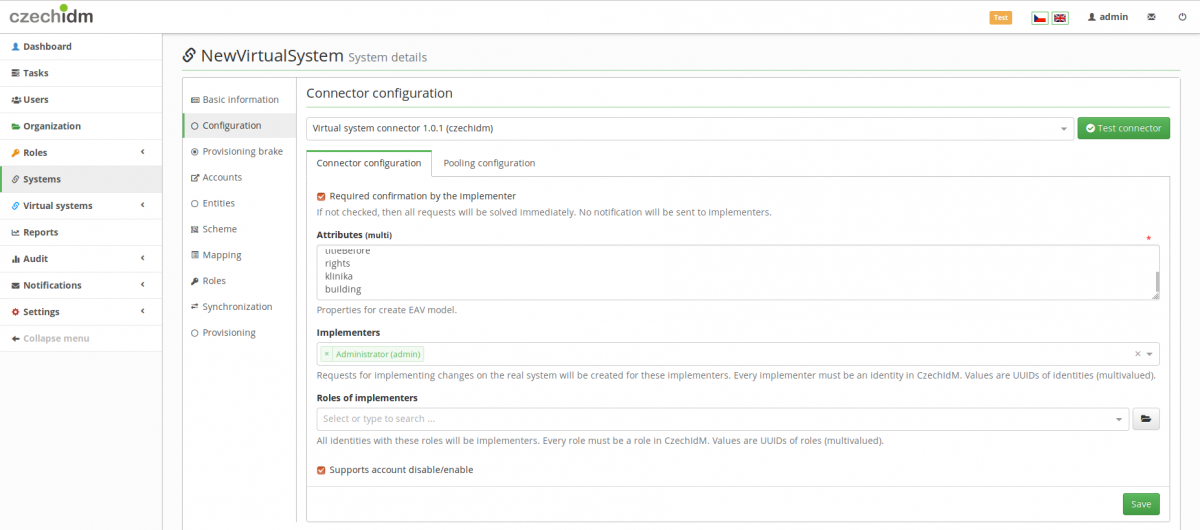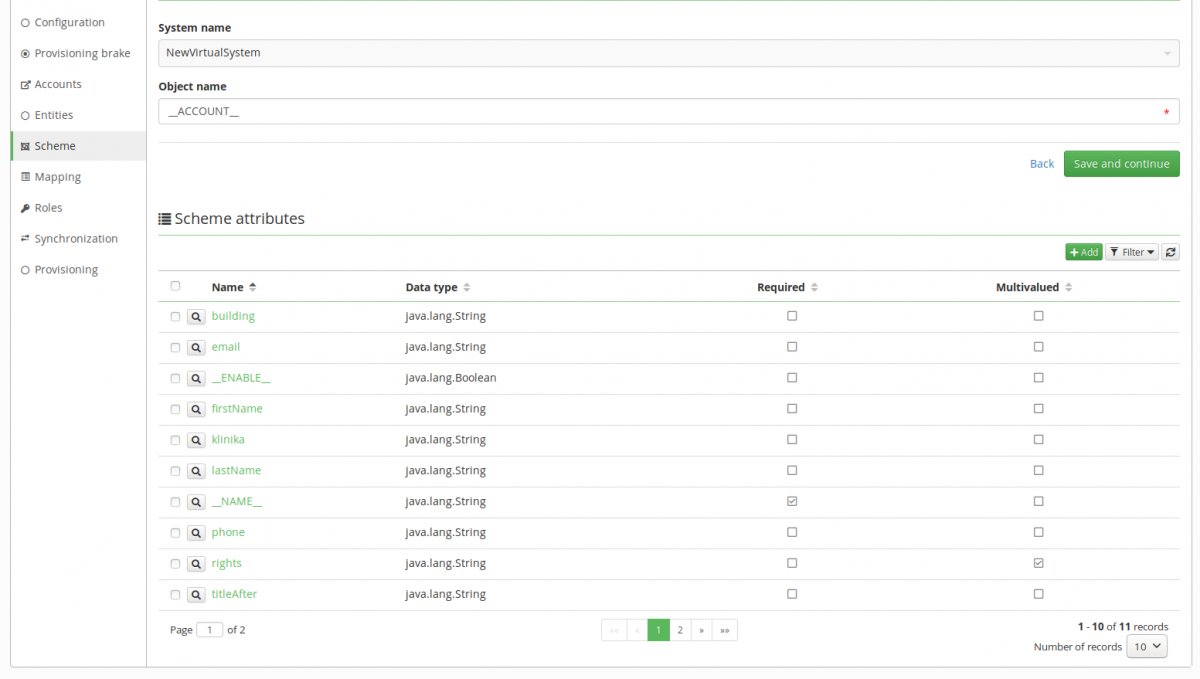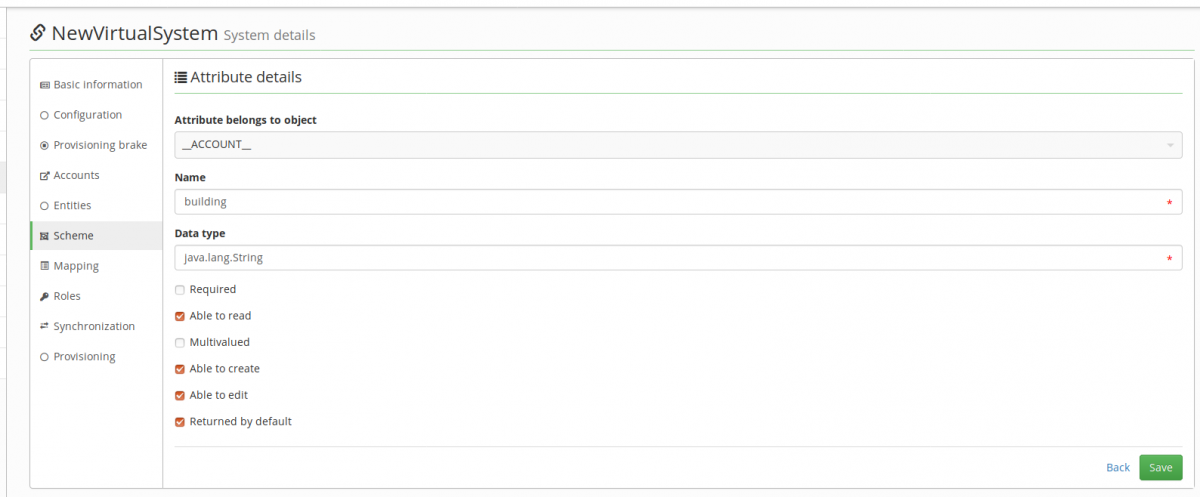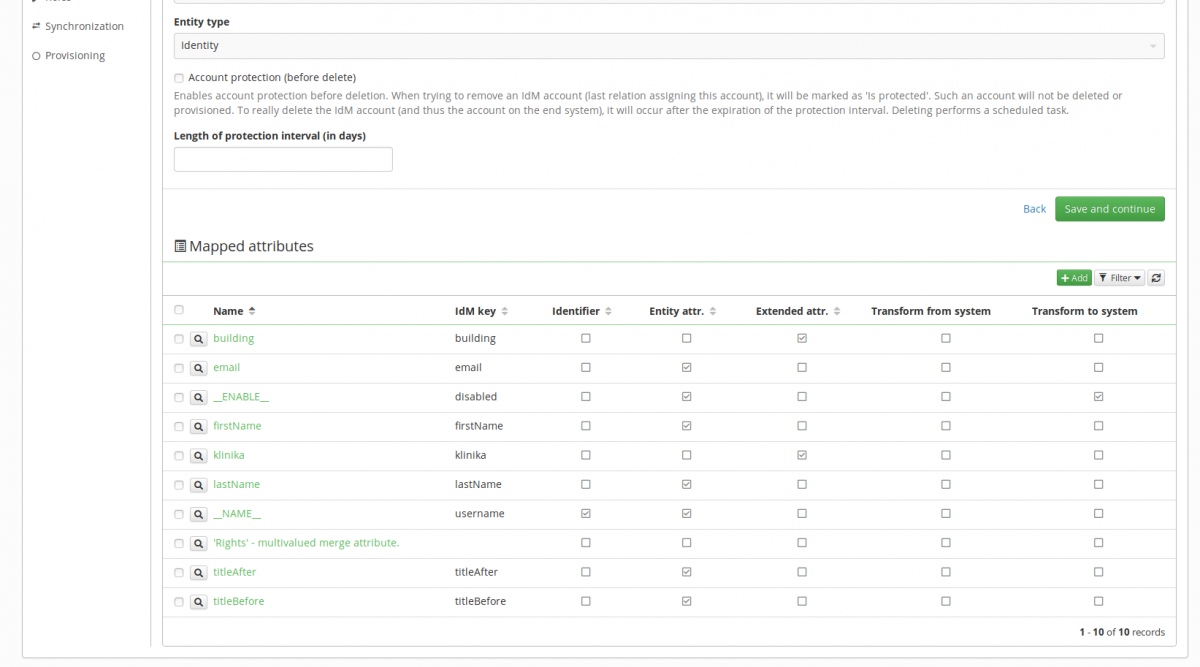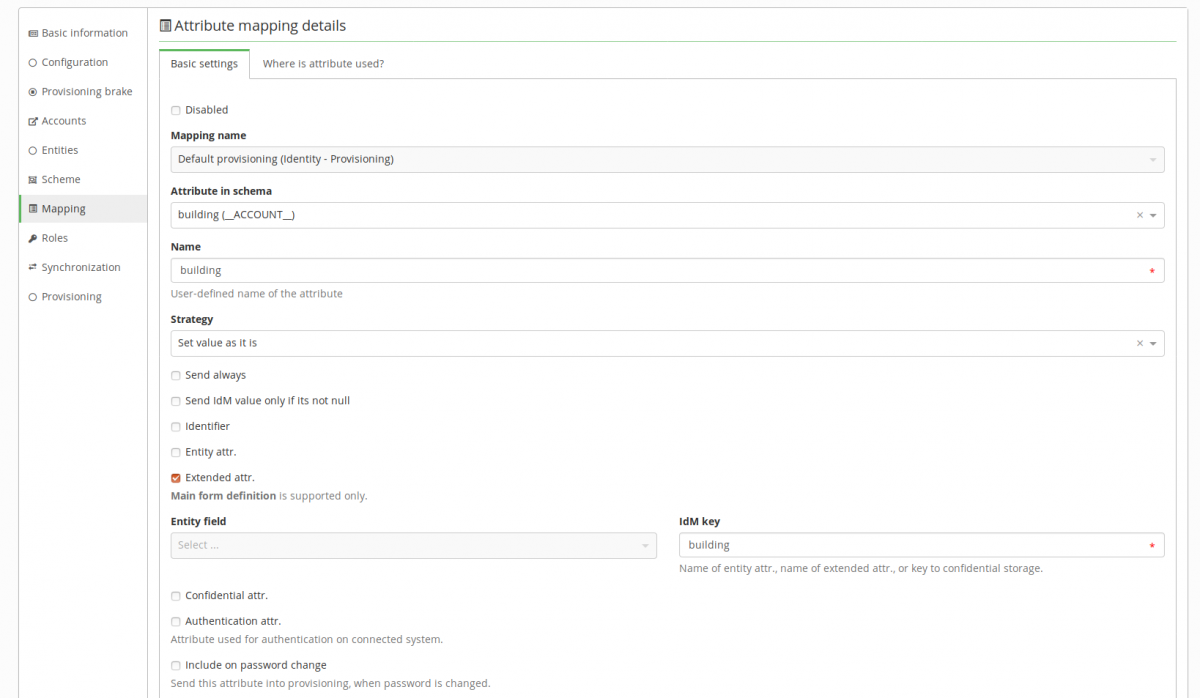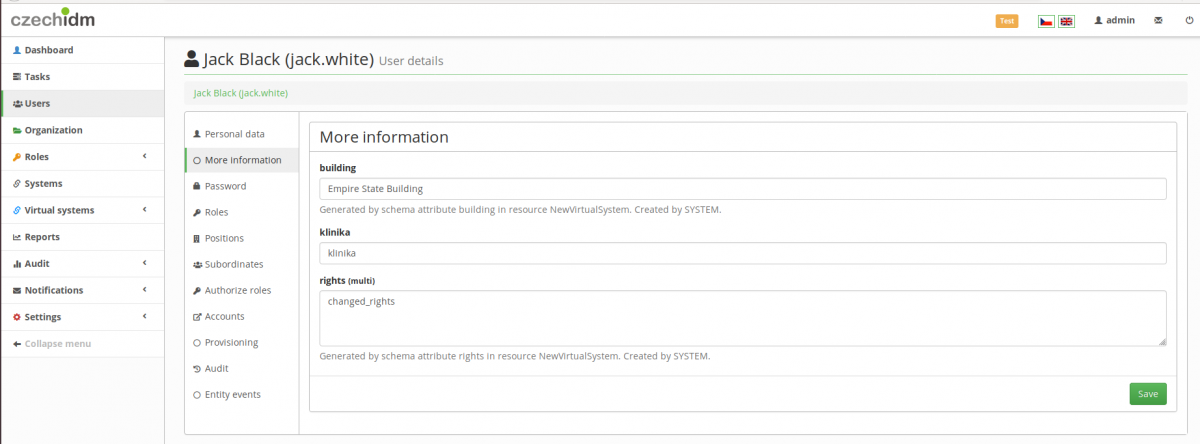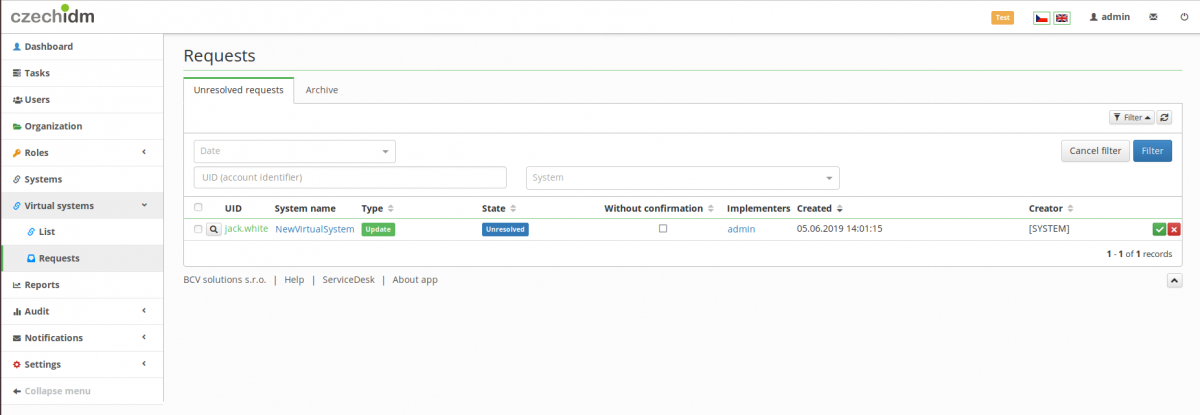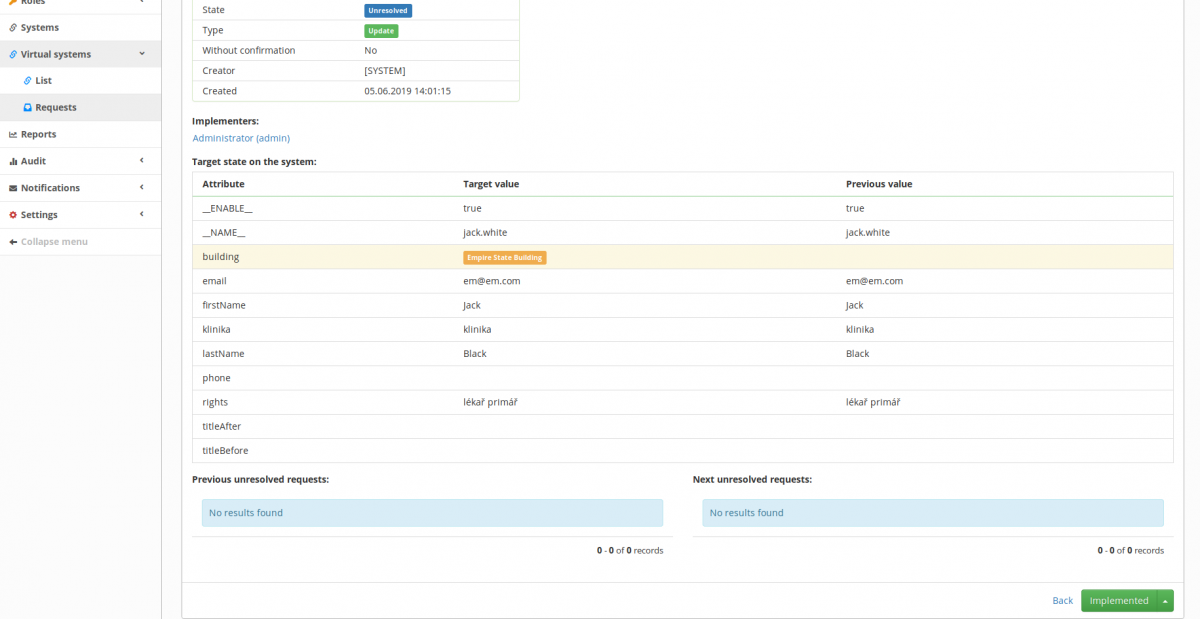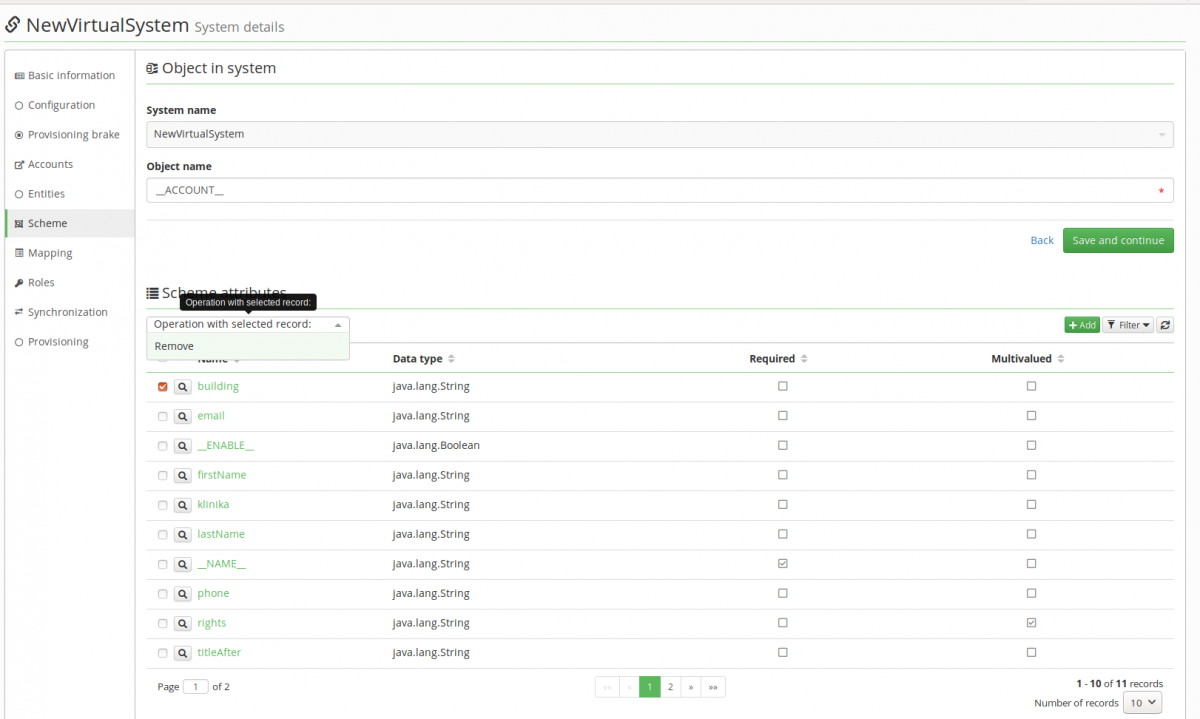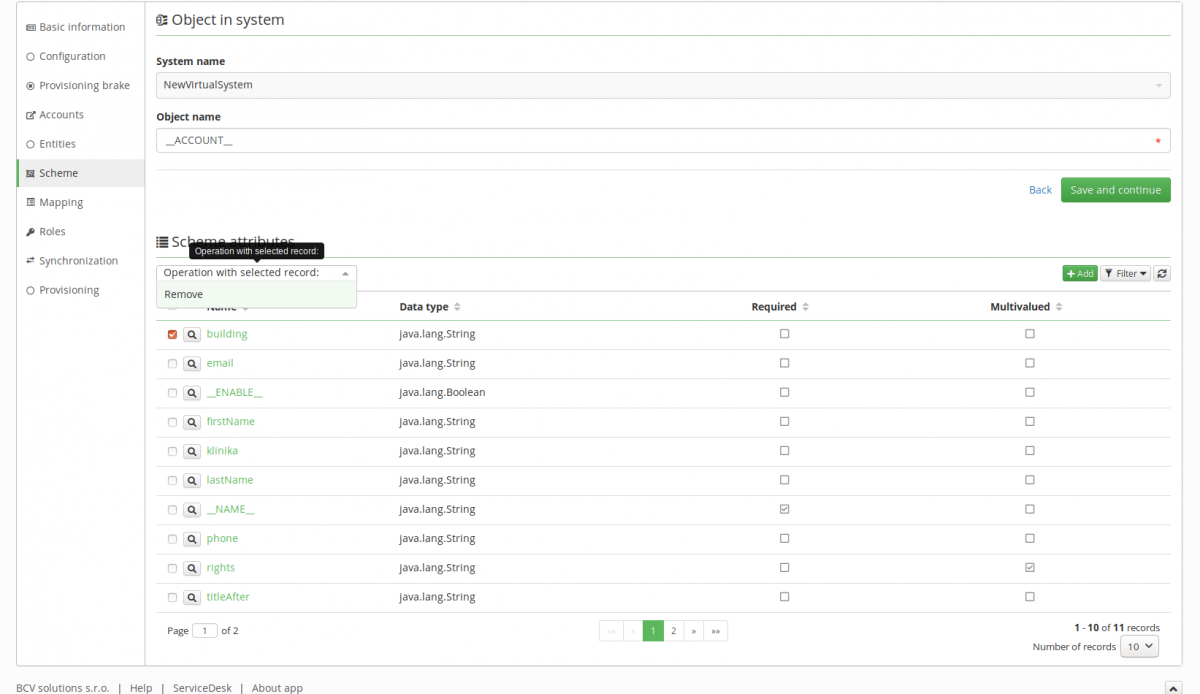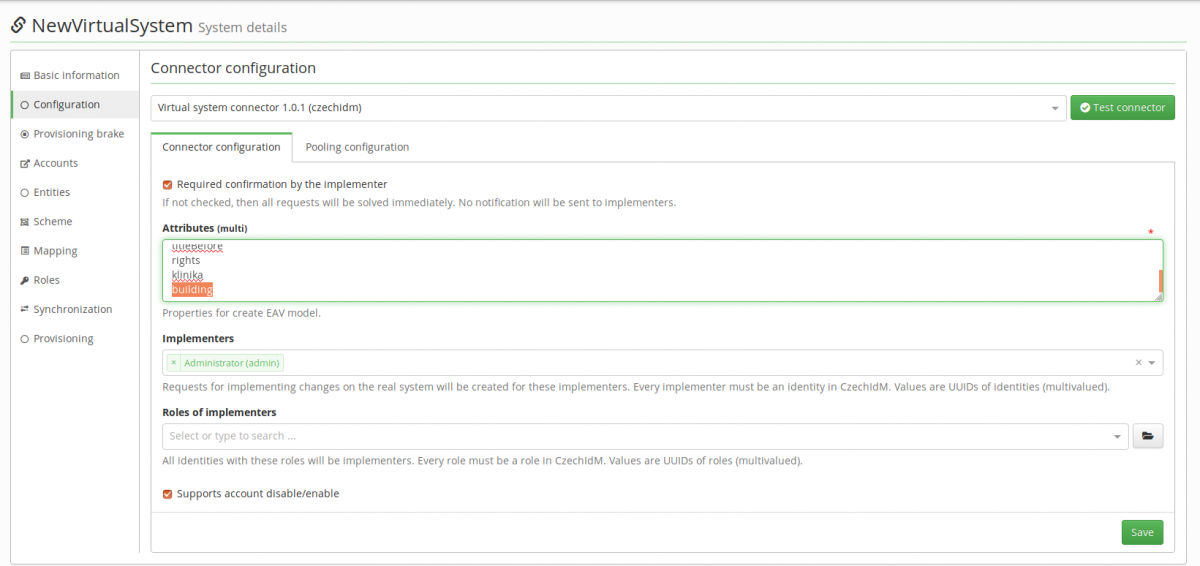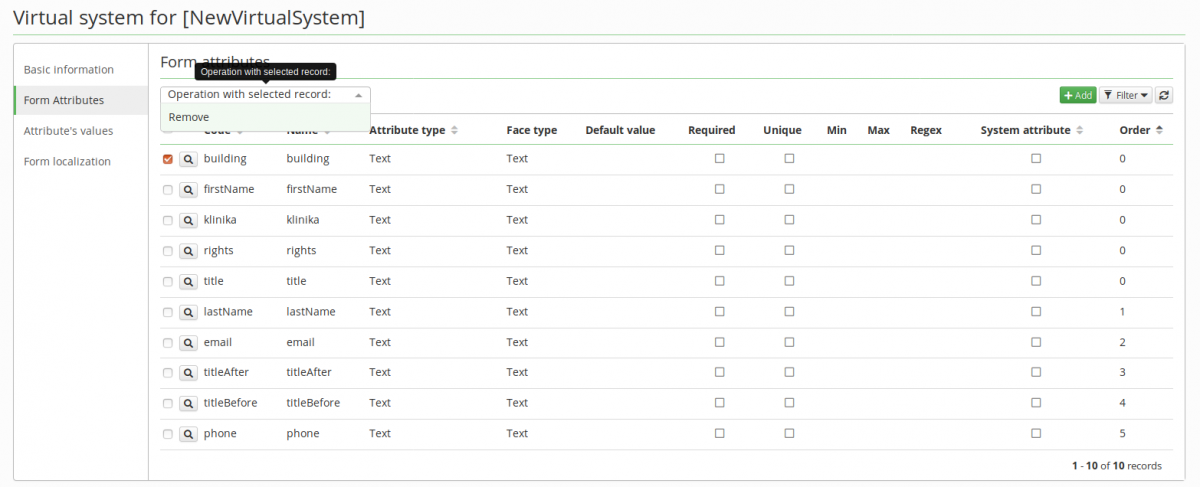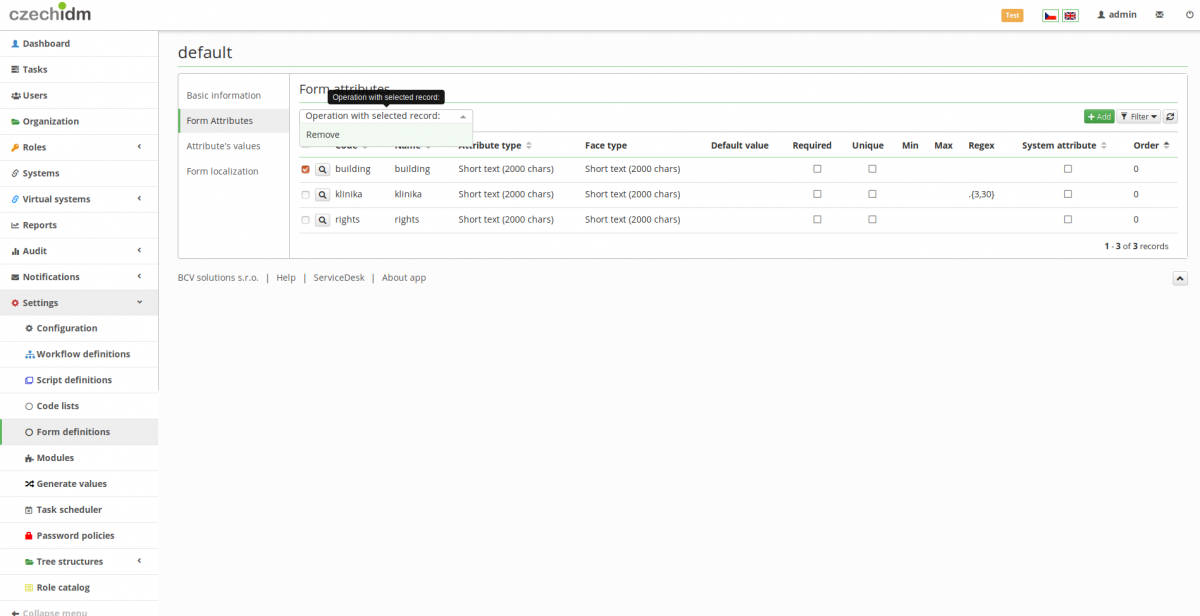Virtual system - adding (and deleting) extended attributes managed by CzechIdM
Introduction
After you've connected a virtual system to CzechIdM (see the tutorial here), you may need to add some extended attributes which are present in the connected system. To achieve this, make sure you have 1) connected the virtual system, 2) have admin set as the implementer, and 3) are logged in as admin.
Let's assume that the managed system contains the information about the building in which each person has their office. To add this information to the IdM, we have to follow several steps.
Step 1: modify form definitions
First, click on Setting in the left panel and choose Form definitions. In the list, find idmIdentity and open it (with the magnifying glass). After that, select Form Attributes and click the green Add button. Only two fields are required: Code, and Name. Make sure you change the Attribute type from default (Short text) if the type is different. You can also set e. g. a default value or a validation using regular expressions if it makes sense in the specific case. Once you've finished, click Save.
Step 2: add the attribute to VS configuration
Click Virtual systems in the left panel and select List. Open you virtual system and select Configuration. Add your attribute (building) to the list of attributes and click on save.
Step 3: modify scheme and mapping
3a - scheme
Click Scheme in your virtual system. You should only see ACCOUNT; open it with the magnifying glass. In Scheme attributes, click the green Add button. In here, fill out the name of the attribute (building), its data type (java.lang.String in this case), and check boxes for Able to read, Able to create, Able to edit, and Returned by default. Click save.
3b - mapping
After that, we have to add the attributes to the mapped attributes. Click Mapping and open Provisioning where you will see the list of mapped attributes. Click Add. Select the Attribute in schema (building). Check the box Extended attr. and fill out the desired IdM key. Click Save.
Step 4: check the functionality
If you open the details of a user with a role defined in the virtual system (with the magnifying glass), click Show full details and select More information, you should now see that you can set the value of the attribute (building). Try to fill in some test information and click Save.
Now go to Virtual systems in the left panel and click Requests. You should now see that there is a new request. If you open it you will see in the detail that the attribute has changed. Also, if you click Notifications and Notifications history in the left panel, you will see that the implementer has been notified that they should make the change in the system they manage and then confirm they've done so in the IdM.
Deleting attributes on virtual systems
Some of the attributes may be superfluous in some cases, e. g., a system which only needs identity's first name and last name to create a login won't need to know user's phone number. Unless we remove those attributes, they will present an unnecessary administrative load since the implementer will be notified each time they change, even though they are not relevant for them.
Removing these attributes is similar in process to creating them - basically, we have to retrace our steps and undo the changes we've made in steps 1, 2 and 3.
If you want to stop provisioning an attribute which is present in other systems you have to do even fewer changes. This can be relevant in the above mentioned phone number case. In this case, undo only steps 2 and 3.
First, remove the mapping of the attribute. Click Virtual systems, List, Mapping, and Provisioning. Check the checkbox next to the attribute you want to remove. Above the list, a new dialog should appear, Operation with selected record. Click and choose Remove. Click Yes.
Then move to Scheme, click ACCOUNT. Check the checkbox next to the attribute you want to remove. Above the list, a new dialog should appear, Operation with selected record. Click and choose Remove. Click Yes.
Then go to Configuration, find Attributes and delete the attribute you want to remove. Click Save.
Next, delete the attribute from the Form definitions of VsAccount. Click Form definitions in Settings, find the VsAccount item, check under Name that this is the virtual system from which you are removing the attribute. Open the item using the magnifying glass.
Go to Form Attributes, check the box next to the attribute you want to remove and click on Operation with selected record, choose Remove and click Yes.
If this operation fails with the message that there are already some values, you must go to the IdM database and delete those values by SQL. It's strongly recommended to make a backup of the database prior to this action.
-- Check the values you are about to delete - change the code of your attribute and your system name -- SELECT * FROM vs_account_form_value WHERE attribute_id IN (SELECT id FROM idm_form_attribute WHERE code='building' AND definition_id IN (SELECT id FROM idm_form_definition WHERE name LIKE 'Virtual system for %NewVirtualSystem%') -- Delete the values DELETE FROM vs_account_form_value WHERE attribute_id IN (SELECT id FROM idm_form_attribute WHERE code='building' AND definition_id IN (SELECT id FROM idm_form_definition WHERE name LIKE 'Virtual system for %NewVirtualSystem%'));
Then you can remove the attribute from the Form Attributes as written above.
The attribute is still present in the detail of the user; however, it is no longer connected to the virtual system and the implementer will not be notified when the attribute's value changes.
If you want to remove the attribute from the IdM entirely, you have to undo step 1 as well. Please note, however, that if any role has this attribute filled in (not empty), you will not be able to remove the attribute. Go to Settings, Configuration, Form definitions, Form Attributes. Check the checkbox next to the attribute you want to remove. Above the list, a new dialog should appear, Operation with selected record. Click and choose Remove. Click Yes.
